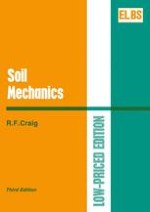1983 | Buch | 3. Auflage
Über dieses Buch
This book is intended primarily to serve the needs of the undergraduate civil engineering student and aims at the clear explanation, in adequate depth, of the fundamental principles of soil mechanics. The understanding of these principles is considered to be an essential foundation upon which future practical experience in soils engineering can be built. The choice of material involves an element of personal opinion but the contents of this book should cover the requirements of most undergraduate courses to honours level. It is assumed that the student has no prior knowledge of the subject but has a good understanding of basic mechanics. The book includes a comprehensive range of worked examples and problems set for solution by the student to consolidate understanding of the fundamental principles and illustrate their application in simple practical situations. The International System of Units is used throughout the book. A list of references is included at the end of each chapter as an aid to the more advanced study of any particular topic. It is intended also that the book will serve as a useful source of reference for the practising engineer. In the third edition no changes have been made to the aims of the book. Except for the order of two chapters being interchanged and for minor changes in the order of material in the chapter on consolidation theory, the basic structure of the book is unaltered.
Anzeige
